Top speed 137 km/h Wingspan 23 m Manufacturer Caproni | Length 11 m First flight 1916 | |
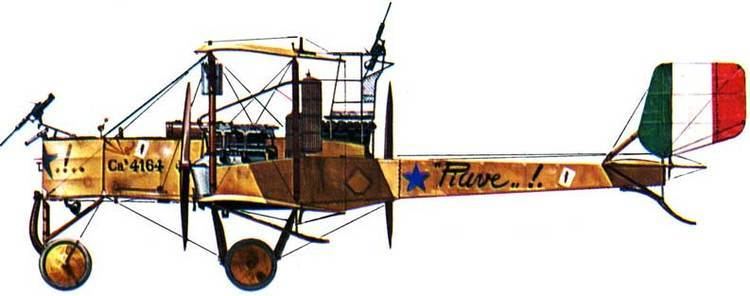 | ||
The Caproni Ca.3 was an Italian heavy bomber of World War I and the postwar era. It was the definitive version of the series of aircraft that began with the Caproni Ca.1 in 1914.
Contents
- Description
- Development
- Operational history
- Variants
- Operators
- Italy
- Slovakia
- United States
- Specifications Ca36
- References
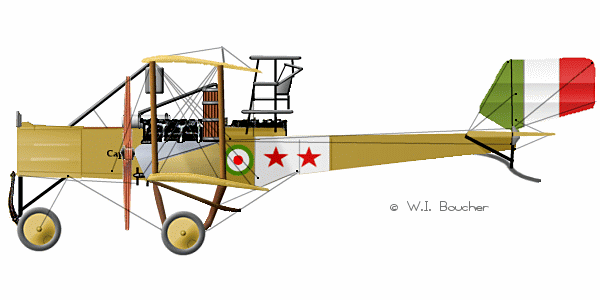
Description
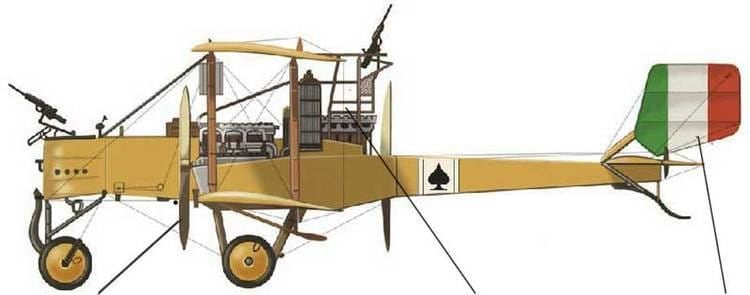
The Ca.3 was a three-engined biplane of wooden construction, with a fabric-covered frame. The crew of four were placed in an open central nacelle (front gunner, two pilots and rear gunner-mechanic). The rear gunner manned upper machine guns, standing upon the central engine in a protective "cage" in front of a propeller. The fixed conventional undercarriage had double mainwheels under each engine and a tailskid under the extreme tail of each boom. A substantial double nosewheel prevented damaging and dangerous noseovers.
Armament consisted of two to four Revelli 6.5 mm or 7.7 mm machine guns, one in a front ring mount and one, two or sometimes even three in an upper ring mount. Bombs were suspended under the hull.
Development

The development of the Ca.1 to the Ca.2 suggested the benefits of increasing amounts of power to the very sound airframe. The Ca.3 was a development of Ca.2, by replacing the two engines mounted on the booms with the same Isotta-Fraschini engine that had been used as the central, pusher engine on that design.
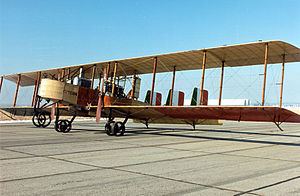
The prototype flew in late 1916 and was soon put into production. Known by Caproni at the time as the Caproni 450 hp, the Italian Army designated it the Ca.3. In Caproni's postwar redesignation, it became the Ca.33. Between 250 and 300 of these aircraft were built, supplying the Italian Army and Navy (the latter using the type as a torpedo bomber), and the French Army. Late in the war, Robert Esnault-Pelterie built the type under licence in France, building an additional 83 (some sources say only 19) aircraft.
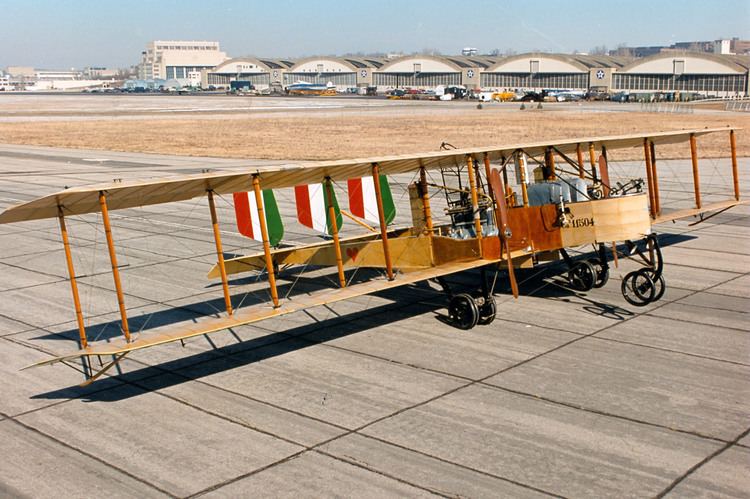
Note: there is some variation in published sources over early Caproni designations. The confusion stems, in part, from three separate schemes used to designate these aircraft - Caproni's in-house designations of the time, those used by the Italian Army, and designations created after the war by Caproni to refer to past designs.
Operational history
The Ca.1 entered service with the Italian Army in the middle of 1915 and first saw action on 20 August 1915, attacking the Austrian air base at Aisovizza. 15 bomber squadrons (1-15 Squadriglia) were eventually equipped with Ca.1, Ca.2, and Ca.3 bombers, mostly bombing targets in Austro-Hungary. The 12th squadron operated in Libya. In 1918, three squadrons (3, 14 and 15) operated in France.
Apart from the Italian Army, original and licence-built examples were used by France (original Capronis were used in French CAP escadres, licence-built examples in CEP escadres). They were also used by the American Expeditionary Force. There has been some confusion regarding the use of the Ca3 by the British Royal Naval Air Service. The RNAS received six of the larger triplane Ca4s and did not operate the Ca3. The British Ca4s were not used operationally and were returned to Italy after the war.
Some of the Ca.36Ms supplied after the war were still in service long enough to see action in Benito Mussolini's first assaults on North Africa.
This plane is also remembered for a tragedy on May 4, 1919, which killed the French General Dr. Milan Rastislav Stefanik, who was the minister of war in the Czechoslovak Republic at the time. The accident occurred at the conclusion of a flight from Campoformido near Udine to Bratislava (capital of Slovakia). On his initial approach, the pilot determined that the ground was too wet to land on, so he increased power to the engines and began to aim the plane to a landing patch further afield which appeared to be dry. While doing so, one of the engines exploded, causing the aircraft to nosedive. General Stefanik and the three Italian crew members were pronounced dead at the scene. A subsequent investigation determined that the most likely cause of engine failure was a failure of the airblast cooling of the engine, probably induced by the increased strain cause by the pilot's sudden demands on the engine after the aborted landing. There were allegations that a Czech anti-aircraft artillery company had fired on the aircraft, either because they mistook the plane's Italian markings for Hungarian markings or that they had done so as part of a conspiracy to see Gen. Stefanik killed, in order to prevent him from instigating proposed changes in the Czech government. These allegations were never proven, and the failure of the engine's blast cooling is widely accepted as the best explanation for the accident.
Variants
All of the following designations were applied after the war. At the time, all were known as the 300 hp by Caproni and the Ca.3 by the Army.
Operators
Italy
Slovakia
United States
Specifications (Ca.36)
Data from
General characteristics
Performance
Armament
2 × 6.5 mm or 7.7 mm FIAT-Revelli machine guns
